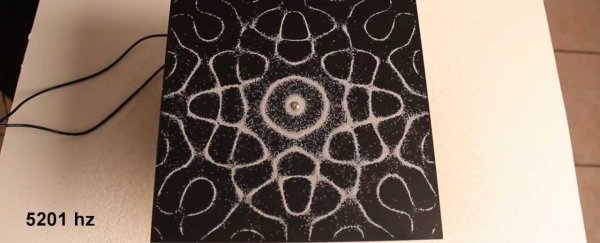In the video above, watch as YouTuber brusspup sprinkles sand onto a metal plate attached to a speaker, and then turns up the volume to bring the whole thing to life in a pulsating, dance of intricate patterns.
Needless to say, it's beautiful and mesmerising all at the same time.
But the science behind the video is just as cool - this experiment is known as the Chladni plate experiment. As brusspup explains over on YouTube, it required a tone generator, a speaker and an attached metal plate.
When you play a tone through the speaker, specific frequencies cause the plate to vibrate in particular patterns - and some regions will vibrate in opposite directions, causing regions of no vibration called nodal lines. And when you add sand, the grains all "fall" into those areas, creating art-like geometric patterns.
As you can see, the location of these vibration-free regions change as the frequency varies resulting in a pulsating, resonance dance. In the above video, brusspup has tested the patterns of different tones, and set the whole thing to music.
Watch and be inspired. And see the full version of the video below, which features individual tones being played and the resonance pattern of each clearly displayed on the plate. You're welcome.
Source: brusspup
